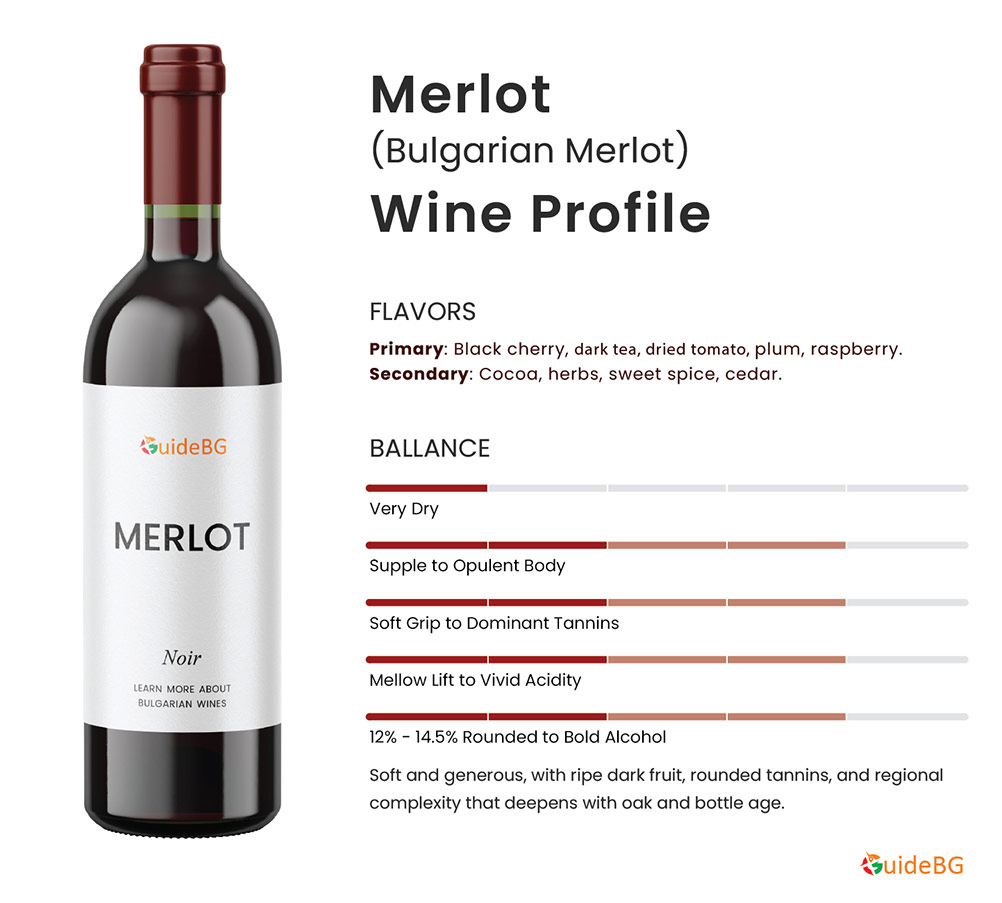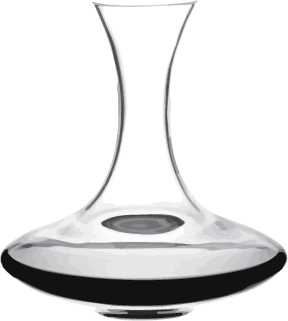Merlot (Мерло) is Bulgaria’s most widely planted international red grape, covering thousands of hectares from the sunny Thracian Lowlands in the south to the cooler Danubian Plain in the north. Introduced in the early 20th century, Merlot quickly became a staple of Bulgarian vineyards, thanks to its adaptability, reliable yields, and ability to produce accessible table wines and serious cellar-worthy reds.

Note: The above wine profile represents a composite overview of Merlot as expressed across Bulgaria. It blends characteristics observed in the Thracian Lowlands, Danubian Plain, Struma Valley, and the Black Sea Coast. Please refer to each regional Merlot profile individually for more precise tasting and stylistic differences.
Though Merlot is French in origin, its expression in Bulgaria is uniquely Balkan. Bulgarian Merlot wines combine lush fruit, balanced acidity, and regional spice, often at excellent value. Whether enjoyed young and unoaked or aged in barrels to develop earthy complexity, Bulgarian Merlot is a pillar of the modern Bulgarian wine scene.
Serving
15-17°C

Standard red

30-60 min

Food Pairing
Bulgarian Merlot is wonderfully food-friendly. It pairs well with roasted meats, stuffed vegetables, kavarma, moussaka, and even richer vegetarian dishes with mushrooms or legumes. The soft tannins make it a versatile match with meat and aged cheeses.
Blending Partners
In Bulgaria, Merlot is widely used in blends to soften more tannic grapes. It appears in cuvées with:
- Cabernet Sauvignon (structure)
- Rubin (spice)
- Mavrud (depth and authenticity)
- Syrah or Melnik 55 (regional flair)
Cellaring Potential
- Young styles: Best within 2–4 years
- Reserve or oak-aged: 5–10 years, developing notes of dried fruit, forest floor, and leather
Breeding Context
Merlot has also played a role in Bulgarian crossbreeding programs, such as:
- Evmolpia (Mavrud × Merlot)
- Bouquet (Pinot Noir × Mavrud, sometimes confused due to Merlot-like softness)
Regional Expressions of Bulgarian Merlot
The character of Merlot changes significantly across Bulgaria’s varied terroirs. Below are summaries of key regional styles.
Click on the region name on the chart agenda to include or exclude it from the visualization.
Each regional merlot style deserves deeper exploration:
Thracian Lowlands Merlot | Danubian Valley Merlot | Struma Valley Merlot | Black Sea Coast Merlot
Alternative Grapes
If you enjoy Bulgarian Merlot, explore:
- Rubin – Spicy and structured
- Cabernet Franc – Herbaceous and expressive
- Mavrud – Bolder, with native intensity
- International: Malbec, Carmenère, or Zinfandel


